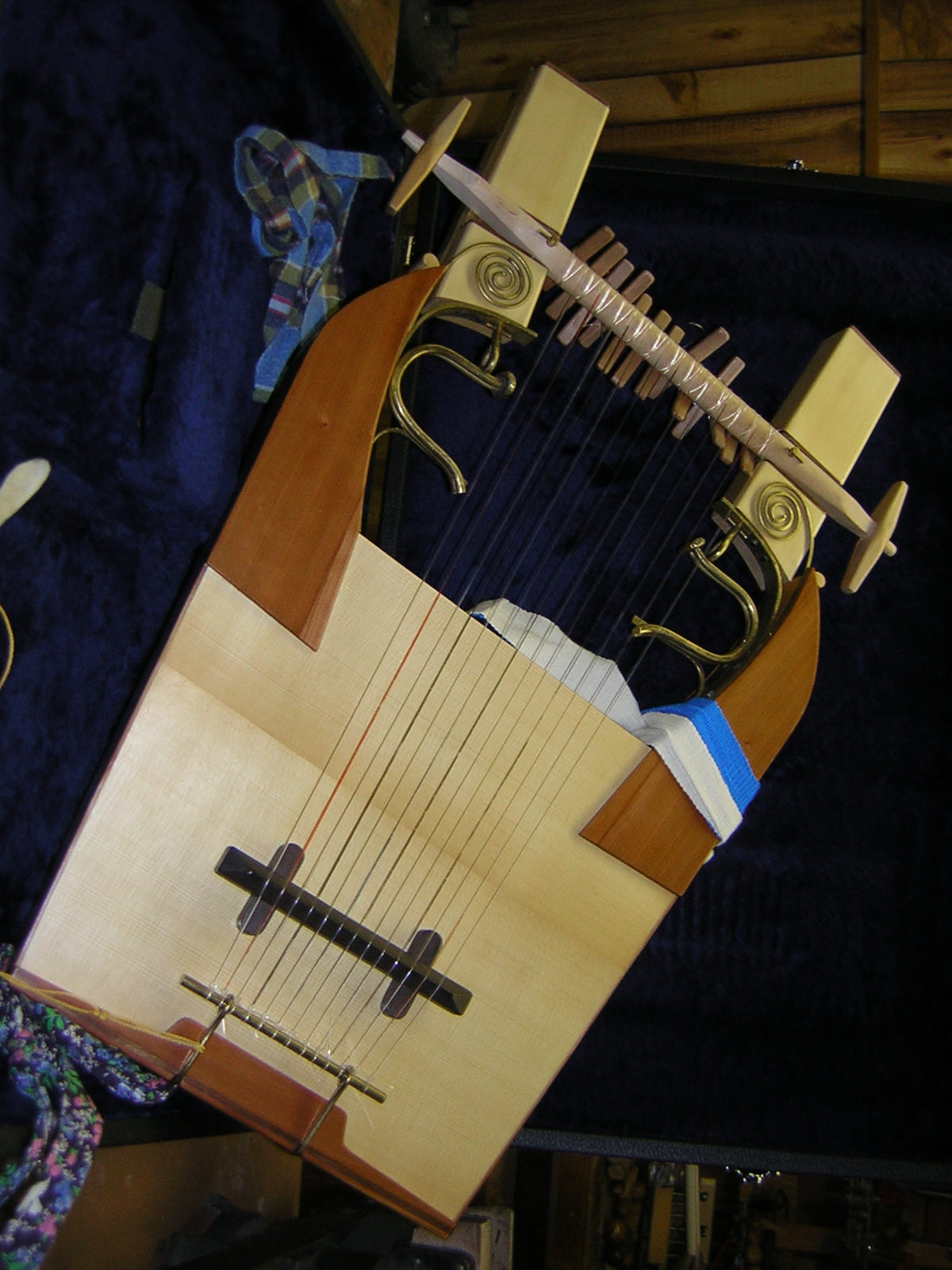Research Projects
The Kithara
The kithara was an ancient Greek musical instrument in the zither family. In Latin it is spelled cithara, and in modern Greek the word kithara has come to mean guitar.
The Kithara was a professional version of the seven-stringed Lyra (Lyre). As opposed to the simpler Lyra, which was a folk-instrument, the Kithara was primarily used by professional musicians (see Kitharode, Citharoedus). (The Barbitos was a bass version of the Kithara popular in the eastern Aegean and ancient Asia Minor.)
The Kithara had a deep, wooden sounding box composed of two resonating tables, either flat or slightly arched, connected by ribs or sides of equal width. At the top, its strings were knotted around the transverse tuning bar (zugon) or to rings threaded over the bar, or wound around pegs. The other end of the strings was secured to a tail-piece after passing over a flat bridge, or the tail-piece and bridge were combined. It was played with a rigid plectrum held in the right hand, with elbow outstretched and palm bent inwards, while the strings with undesired notes were damped with the straightened fingers of the left hand.
The Kithara was played primarily to accompany dances and epic recitations, rhapsodies, odes, and lyric songs. It was also played solo at the receptions, banquets, national games, and trials of skill.
The Lyre
The lyre is a stringed musical instrument well known for its use in Classical Antiquity and later. The recitations of the Ancient Greeks were accompanied by lyre playing. The lyre of Classical Antiquity was ordinarily played by being strummed with a plectrum, like a guitar or a zither, rather than being plucked, like a harp. The fingers of the free hand silenced the unwanted strings in the chord. A classical lyre has a hollow body or sound-chest (also known as soundbox or resonator). Extending from this sound-chest are two raised arms, which are sometimes hollow, and are curved both outward and forward. They are connected near the top by a crossbar or yoke. An additional crossbar, fixed to the sound-chest, forms the bridge which transmits the vibrations of the strings. The deepest note was that farthest from the player's body; as the strings did not differ much in length, more weight may have been gained for the deeper notes by thicker strings, as in the violin and similar modern instruments, or they were tuned by having a slacker tension. The strings were of gut. They were stretched between the yoke and bridge, or to a tailpiece below the bridge. There were two ways of tuning: one was to fasten the strings to pegs which might be turned; the other was to change the place of the string upon the crossbar; probably both expedients were simultaneously employed.
|
|

|




